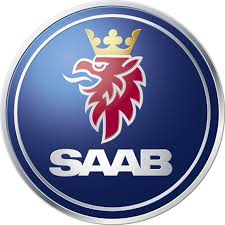9-3 FWD (9440) L4-2.0L Turbo (B207R) (2009)
/l4-2.0l_turbo_(b207r)/Page-1340019.png)
The table below shows an example of how an error is detected in a byte in the RAM:
The error is that the second-last bit is infecting the last one with a one. This generates diagnostic trouble code P0604.
3. "Dog Error" is short for "Watchdog Error". A check is carried out to ensure that the program passes certain program steps which are always run.
Analog inputs
The voltage interval 0-5 V from a temperature sensor or pressure sensor is converted in the control module into a digital value, often 0-255 (256 steps),
which is equivalent to a byte.
If we know that the bit value is never less than 10 or more than 245 under normal operation, we can set a diagnostic trouble code if the value falls outside
of this range.
See diagnostic trouble code P0117 for Trionic 8 by way of example.
In the example above, you can see that the diagnosis is unable to differentiate between interference and a short-circuit to 5 V. The reason for this is that
the input has a Pull-Up at 5 V, and this is equivalent to a bit value of 255. This is the greatest value the control module can read. Thus interference
generates the same diagnostic trouble code as a short-circuit to 5 V or B+.
The A/D value has to be too high for 0.5 s in order to set the diagnostic trouble code. This is known as the filter time. The filter has to be in place to
prevent short-term interference from mobile telephones or the ignition system, for example, from setting diagnostic trouble codes.
The diagnostic trouble code is set after 0.5 s. The MIL (Malfunction Indicator Lamp) or Check Engine, as it is also known, is activated only during the
second run in a row where faults have occurred. If the fault is rectified without deleting the diagnostic trouble code, Check Engine will go out after the
third fault-free run.
The control module uses a substitute value for coolant temperature which is based on the intake air temperature.
As long as the fault is active, a bus message is sent indicating that the cooling temperature value is implausible. This means that the receiving control
module is able to undertake certain action, such as starting the radiator fan and resetting the temperature gauge.
Digital inputs
The camshaft and crankshaft sensor and a door switch are examples of digital inputs. These are more difficult to diagnose. In the case of the camshaft
and crankshaft sensor, it may be concluded that there is a fault in the camshaft sensor if only the crankshaft sensor is transmitting signals (Motronic).
Buttons and many other digital inputs are often entirely without diagnostics.
You can see that simply switching on the ignition is not enough for the diagnostics to locate the fault. The crankshaft has to be rotating. If the camshaft is
not rotating, the diagnostic trouble code will be set after 12 engine revolutions. If the fault is present from start-up and the motor is unable to start
without the sensor, it is necessary to turn the engine over on the starter motor before the code is set (e.g. Motronic).
If the cam chain snaps, the diagnostic trouble code will be set. The control module is unable to tell whether the camshaft sensor has stopped transmitting
signals because of a mechanical fault or an electrical fault.
Outputs
When at rest, when a last-stage transistor is not activated, the voltage between collector and emitter must be high (often battery voltage). When the
transistor is active, the voltage must be low. Otherwise a diagnostic trouble code is set.
